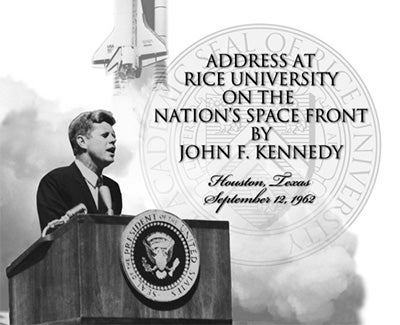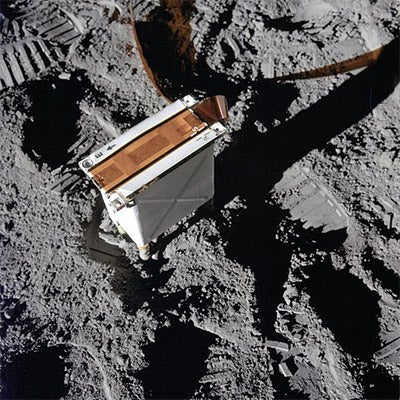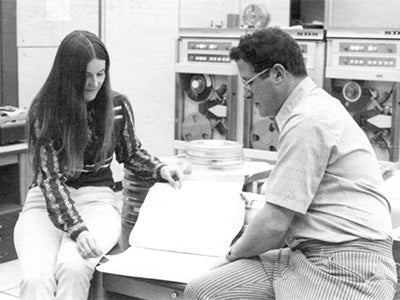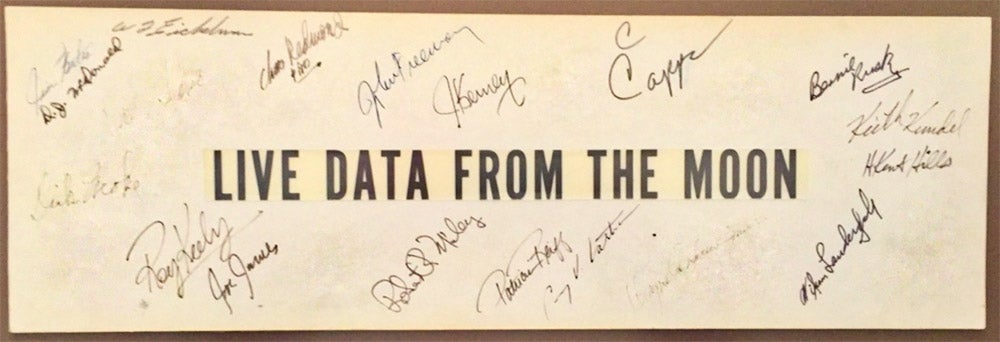Patricia Reiff, Professor of Physics & Astronomy, Rice University

I was a child of the space age. I was seven when Sputnik was launched October 4, 1957, and I recall my mom taking me out in the evening to watch it, and years later, Telstar, pass overhead. When Yuri Gagarin orbited on April 12, 1961, I, like the rest of the country, was disappointed at “losing” the space race to the Russians, but I watched with pride as Alan Shepard flew a suborbital flight just a few weeks later (May 5, 1961) followed by John Glenn’s orbital flight on Feb 20, 1962 – all of these happened while I was in elementary and middle school. When I was young, I thought I wanted to be a veterinarian, but a father-daughter class in Astronomy at the OKC planetarium (sponsored by the Brownie Scouts) had me looking towards the stars. Thus when Kennedy gave his “to the moon” speech at Rice University on September 12, 1962, I had just started seventh grade and was dazzled, never dreaming that less than nine years later, I would be at Rice University analyzing data from the moon.

So in middle school, I took all the science and math I could (and yeah, I took cooking and sewing too). In 1962, Watson and Crick won the Nobel Prize for the double-helix of DNA, and I remember making a model by bending coat hangers. When I went to High School, I continued taking all the math and science that was available. (Our beloved Physics teacher retired just before my Senior year, so in fact I didn’t take Physics in high school. I did take typing, knowing that I did NOT want to be a secretary but I thought it might be useful, and man, was I right!) Meanwhile, the manned (and unmanned) space program continued to progress, and in July 1969 I watched eagerly as Apollo 11 took off for the moon and landed safely (with just seconds of fuel to spare). I was at my future husband’s house in Tulsa with his family and some friends, glued to the TV as the events unfolded. By then I was a rising Junior Physics major, doing undergraduate research in low temperature Physics. Superconductivity was the amazing new thing and we were testing many elements and alloys (unsuccessfully) for superconducting behavior. The summer between my Junior and Senior year I was part of an undergrad summer research program (the precursor to today’s REU’s) at Argonne National Lab. But I got really bored making measurements at 12 significant figures so they could measure the second derivatives of the Pressure versus Temperature at the triple point of Helium. I wanted to do something that we didn’t know the FIRST digit of! Earlier that year was the Apollo 13 near-disaster, and that had also made a huge impact on me. Again the country was in silent prayer and rapt attention as the events unfolded, and fixing things in space with duct tape – WOW! The can-do spirit captivated me.
Little did I know that Apollo 13 carried aboard a twin of the experiment that I would work with for the next few years. The CPLEE, Charged Particle Lunar Environment Experiment, was the third instrument designed and built by Rice scientists: the first being the Apollo Dust Detector (on Apollo 11, 12, 14, and 15), the SIDE (Suprathermal Ion Detector Experiment) on 12, 14, and 15, and CPLEE on 13 and 14.

When I graduated from college in May 1971, my then-husband was in the Army doing basic training (so he could join the Reserves and avoid going to Vietnam), and I had been accepted at Rice to graduate school in both the Physics Department and the Space Science Department. “Which one has a summer job?” I asked, and, lo and behold, there was a job for a computer programmer to analyze the data from CPLEE. I took over the job from a grad student’s wife (who incidentally I recognized from a Scout archaeology camp we had gone to in New Mexico ten years previously), and learned Assembly language and programming with paper tape. I’ve been counting electrons and protons in space ever since – missions including Atmosphere Explorer, Dynamics Explorer, Polar, IMAGE, Cluster and now Magnetospheric Multiscale. We normally just analyzed data which arrived at Rice on huge 7-track tape reels (which we copied onto 9-track tape reels for the SDS and later IBM computers to read). But during the remaining Apollo missions (15, 16, & 17) we got to be in the “ALSEP” room to watch our data come in LIVE. We were able to see the dust plume from the Apollo 15 S-IVB impact, for example, which was great fun. But the best was being in mission control building when 15, 16, and 17 took off from the lunar surface – they just exploded and shot away. Only Apollo 17 had a camera which could track it leaving the moon. We have recreated that shot for full dome at: https://space.rice.edu/apollo/ , and I have spent at least part of my career working with planetariums as “payback” for my early inspirations.
By the late 70’s all the data analysis funding for the ALSEPS had dried up, and the RTG’s were losing power, so it was time to shut down the operations. Both my thesis Advisor (David Reasoner, in image above) and I had turned to new missions. Our instrument had had several failures and was officially in “standby” mode. Still, at the closing ceremony, I grieved when CPLEE was officially shut off. I mentioned to the operator that I wished I had been able to flip the switch to turn CPLEE off, so he let me turn off the last experiment on the moon instead (which was the seismometer), and I flipped the switch on September 30, 1977. Afterwards, the press asked me how I felt about turning off the last experiment on the moon. “My instrument provided me with my PhD”, I said, “I feel I just pulled the plug on my grandmother”. That was my first time on national TV news, and the first time I learned the power of the “sound bite”. We all signed the “Live Data from the Moon” sign, and they let me keep it. (The sign had been created for a display of moon data for congress, and had hung in the ALSEP room at JSC.)

In all, Apollo provided PhDs for a number of Rice graduate students who went on to distinguished science careers. All of our groundbreaking discoveries were confirmed by later, more capable plasma detectors. And yes, I did discover things that were not known even to one significant digit. And that was worth it all.
(Houston, July 16, 2019; https://reiff.rice.edu; reiff@rice.edu)